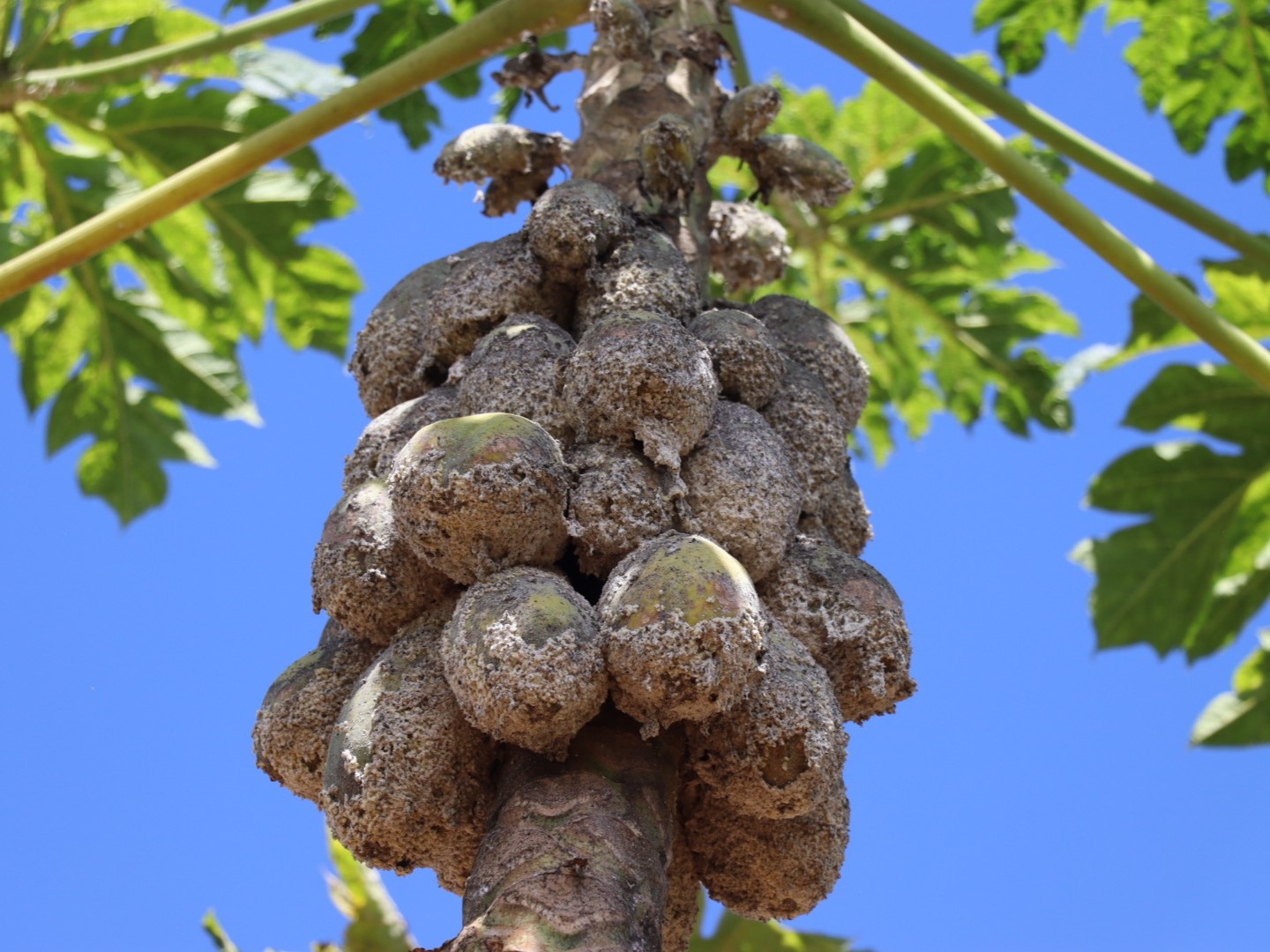Conserving insect biodiversity

Papaya mealybug infested fruit in Kenya. Credit - CABI.
Conserving insect biodiversity through biological control of the papaya mealybug in Kenya
The papaya mealybug (Paracoccus marginatus) is a polyphagous (able to feed on various kinds of food) insect pest – that affects not just papaya but over 200 plants of economic importance, including cassava and avocado. Since its first report in Kenya in 2016, this invasive pest of American origin has rapidly spread in the greater East African region, to neighbouring Uganda and the fragile state of South Sudan. A Centre for Agriculture and Bioscience International (CABI) study predicted that if not sustainably managed, papaya mealybug would continue to rapidly spread into novel areas in East Africa. This pest causes a 57% yield loss on papaya, resulting in household economic losses of £2,224 per hectare annually. In Kenya alone, more than half of the country’s papaya crops have been affected by the papaya mealybug – causing some farmers to abandon the fruit altogether.
"Excessive use of pesticides is the second most important driver for the worldwide decline in insect populations, negatively impacting insect biodiversity by eliminating native pollinators and natural enemies of pests."
The coping strategy of farmers is by spraying highly hazardous WHO class II and 1b pesticides, up to 16 times in a season to control the pest. Excessive use of pesticides is the second most important driver for the worldwide decline in insect populations, negatively impacting insect biodiversity by eliminating native pollinators and natural enemies of pests. Resource-limited smallholder farmers, especially women, are most affected by biodiversity loss as they are most directly dependent on insect pollinators for their crop production.
Since 2022, with funding from the Darwin Initiative, CABI and partners have combined efforts to manage this pest through the use of the encyrtid wasp (Acerophagus papayae) - a biological control agent – as part of an Integrated Pest Management strategy for the papaya mealybug in Kenya, aiming to also conserve native insect biodiversity.
Following the biological control agent release efforts, post-release surveys show that the parasitoid – insects which live as larvae in other organisms, which they eventually kill – has become established at Coastal Kenya, with parasitism rates of up to 53% after one release and up to 72% after the second release. Nearly 85% of farmers view the release of the biological control agent to manage the papaya mealybug positively, and most farmers (94%) support the biological control programme for papaya mealybug in their community.

The strategy has resulted in changes in farmers’ perceptions towards biological control. There has been increased awareness of alternative pest management practices, for example, as well as increased activities undertaken by farmers to enhance pests’ natural enemies, including reduced chemical pesticide use. Within one year following the parasitoid release, there have been very few incidences of papaya mealybug infestations at release sites, which correlates with an increase in papaya production and income, and a decrease in average spending on chemical pesticides. The average amount of papaya harvested, and income, was also greater on treatment than control farms. Farmers also reported to have stopped nearly all pesticide use because the agent was working and had started replanting previously cut papaya orchards. There is also increased awareness about biological control and biodiversity, and farmers who had heard of biological control increased to 62%. Ecological niche modelling for the parasitoid has also shown fair to excellent probability for its establishment on Kenya’s coastal areas, suggesting the parasitoid will establish successfully.
"Through the release and establishment of the biological control agent, the project aims to establish whether the diversity and abundance of native insect biodiversity will change positively."
Following this success, the regulator for biological control in Kenya has granted approval for release of the agent in four other counties. Approval has also been received from neighbouring Uganda and South Sudan for the agent.
Following the release of biological control agents, native insect biodiversity – including pests, pollinators, predators, decomposers, scavengers, attendant ants, parasitoids, vectors of pathogens, and food sources – has been re-established. A number of natural enemies, particularly parasitoids (8%) and predators (22%) have been identified in the papaya fields. Through the release and establishment of the biological control agent, which in turn aims to reduce pesticide use, the project aims to establish whether the diversity and abundance of this native insect biodiversity will change positively.
Written by Ivan Rwomushana. For more information on this Darwin Initiative Main project 29-012, led by CABI, please click here.

 Back
Back